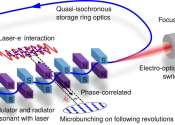EarthCARE offers a sneak peek into Earth's energy balance
Offering a foretaste of what's to come once it is fully commissioned, ESA's EarthCARE satellite has returned the first images from its broadband radiometer instrument. These initial images offer a tantalizing glimpse into ...









